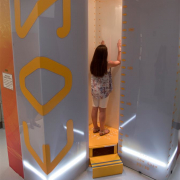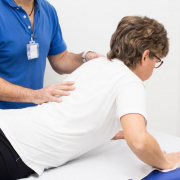Prevalence of the thoracic scoliosis in children and adolescents candidates for strabismus surgery: results from a 1935-patient cross-sectional study in China.
Every year, the Italian Scoliosis Study Group selects the best published papers on conservative spine treatment from the global scientific literature.
Here is the abstract from one of these papers.
Prevalence of the thoracic scoliosis in children and adolescents candidates for strabismus surgery: results from a 1935-patient cross-sectional study in China.
Pan XX, Huang CA, Lin JL, Zhang ZJ, Shi YF, Chen BD, Zhang HW, Dai ZY, Yu XP, Wang XY.
Eur Spine J. 2020 Apr;29(4):786-793. doi: 10.1007/s00586-020-06341-7. Epub 2020 Feb 28.
PURPOSE
No study so far has paid attention to strabismus-related spinal imbalance. This study aimed to determine the epidemiology of thoracic scoliosis in children and adolescents with strabismus and investigate the association of two diseases.
METHODS AND DESIGN
A cross-sectional study. Study group consists of 1935 consecutive candidates for strabismus surgery (4-18 years); Control group consists of the age- and sex-matched patients with respiratory diseases. All subjects underwent a screening program based on chest plain radiographs using the Cobb method. Their demographic information, clinical variables and results of Cobb angle were recorded and analyzed.
RESULTS
A significantly higher prevalence of thoracic scoliosis (289/1935, 14.94% versus 58/1935, 3.00%) was found in study group compared with control group. Among strabismic patients, the coronal thoracic scoliosis curve mainly distributed in right and in main thoracic (198/289) and in the curves 10°-19° (224/289); Age range 7-9 years (103/1935), female (179/1935) and concomitant exotropia patients (159/851) were more likely to have thoracic scoliosis. According to the logistic regression, thoracic scoliosis had no significant association with age, BMI, duration of illness and onset age (p > 0.05). However, gender, BCVA, type of strabismus and degree of strabismus showed a significant relationship with the prevalence of thoracic scoliosis (p < 0.05).
CONCLUSIONS
With a pooled prevalence of 14.94%, strabismus patients showed a great higher risk of developing thoracic scoliosis. Screening for scoliosis in strabismus patients can be helpful to discover a high prevalence of potential coronal scoliosis. More attention should be paid to ophthalmological problems in patients with scoliosis. These slides can be retrieved under Electronic Supplementary Material.










Leave a Reply
Want to join the discussion?Feel free to contribute!